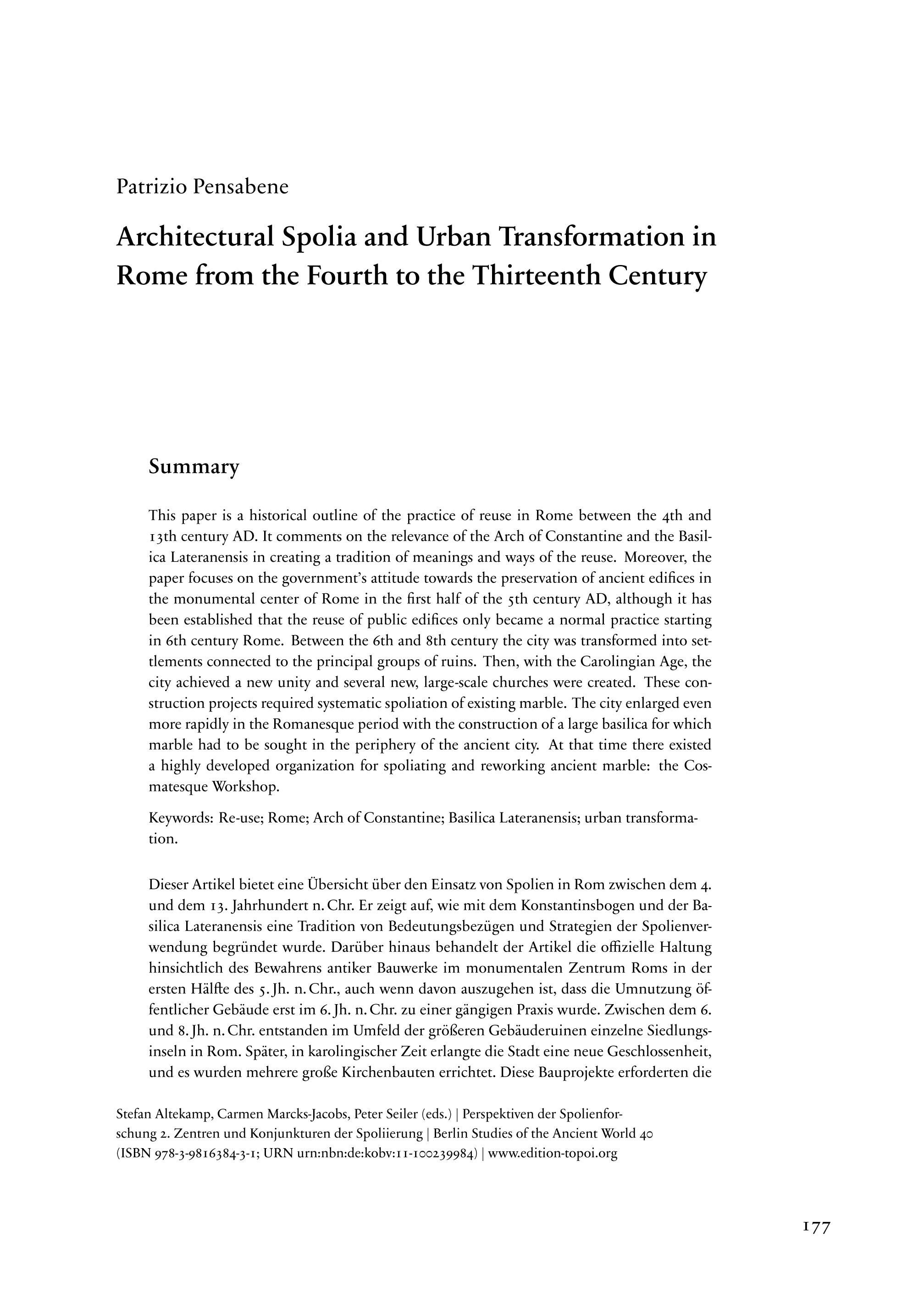Architectural Spolia and Urban Transformation in Rome from the Fourth to the Thirteenth Century
This paper is a historical outline of the practice of reuse in Rome between the 4th and 13th century AD. It comments on the relevance of the Arch of Constantine and the Basilica Lateranensis in creating a tradition of meanings and ways of the reuse. Moreover, the paper focuses on the government’s attitude towards the preservation of ancient edifices in the monumental center of Rome in the first half of the 5th century AD, although it has been established that the reuse of public edifices only became a normal practice starting in 6th century Rome. Between the 6th and 8th century the city was transformed into settlements connected to the principal groups of ruins. Then, with the Carolingian Age, the city achieved a new unity and several new, large-scale churches were created. These construction projects required systematic spoliation of existing marble. The city enlarged even more rapidly in the Romanesque period with the construction of a large basilica for which marble had to be sought in the periphery of the ancient city. At that time there existed a highly developed organization for spoliating and reworking ancient marble: the Cosmatesque Workshop.
Dieser Artikel bietet eine Übersicht über den Einsatz von Spolien in Rom zwischen dem 4. und dem 13. Jahrhundert n. Chr. Er zeigt auf, wie mit dem Konstantinsbogen und der Basilica Lateranensis eine Tradition von Bedeutungsbezügen und Strategien der Spolienverwendung begründet wurde. Darüber hinaus behandelt der Artikel die offizielle Haltung hinsichtlich des Bewahrens antiker Bauwerke im monumentalen Zentrum Roms in der ersten Hälfte des 5. Jh. n. Chr., auch wenn davon auszugehen ist, dass die Umnutzung öffentlicher Gebäude erst im 6. Jh. n. Chr. zu einer gängigen Praxis wurde. Zwischen dem 6. und 8. Jh. n. Chr. entstanden im Umfeld der größeren Gebäuderuinen einzelne Siedlungsinseln in Rom. Später, in karolingischer Zeit erlangte die Stadt eine neue Geschlossenheit, und es wurden mehrere große Kirchenbauten errichtet. Diese Bauprojekte erforderten die systematische Spoliierung von Marmor. In der Zeit der Romantik wuchs die Stadt durch die Errichtung einer großen Basilika, für deren Bau Marmor in der Peripherie der antiken Stadt gesucht werden musste, sogar noch schneller an. Zu dieser Zeit existierte ein professionalisiertes Unternehmen für die Spoliierung und Umarbeitung antiker Werkstücke aus Marmor: die Werkstatt der Cosmaten.

